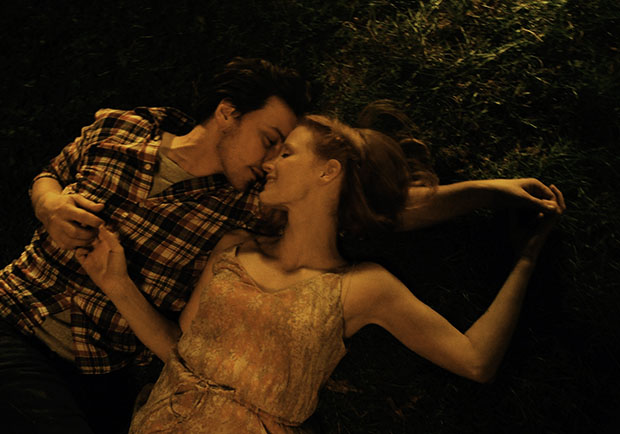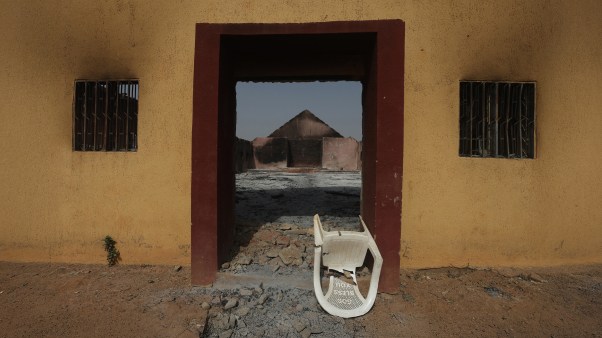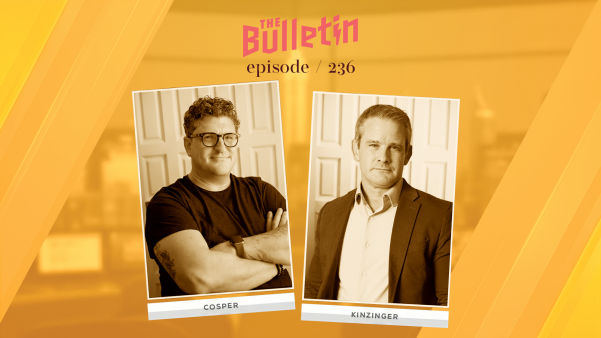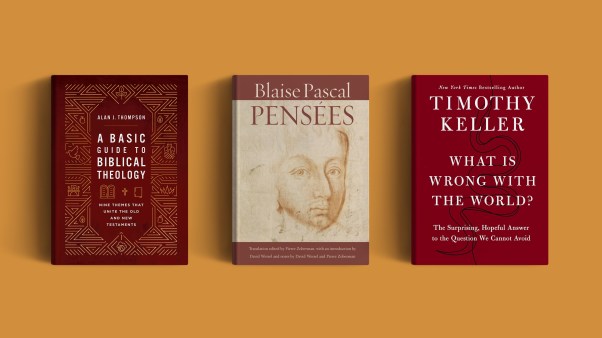Editor's Note: We can't all make it to the Toronto International Film Festival (which is too bad, since it's where some of the best films of the next year are shown). But CT has had the next best thing: daily updates during the Festival from our critic Ken Morefield. All this week, we've had capsule reviews and reflections on some of the festival's most important movies. You can get to them all via the links at the end of this article.
The Disappearance of Eleanor Rigby: Him and Her, directed by Ned Benson 1982, directed by Tommy Oliver Faith Connections, directed by Nan Palin 12 Years a Slave, directed by Steve McQueen
Clocking in at just over three hours, The Disappearance of Eleanor Rigby is really two movies played back to back. Him follows Conor (James McAvoy), a man trying to keep his failing restaurant afloat while he deals with his wife's depression. When she leaves, he tries to wait patiently, tries to get on with his life, and fitfully tries to reconnect with her. Her follows Eleanor (Jessica Chastain) as she tries to deal with the root causes of her depression and start over after a family tragedy and a personal breakdown.
Eleanor Rigby's conceit—I'm tempted to say "gimmick"—is that it shows their two stories back to back rather than interweaving or cutting between them. Thus it becomes both a Rashomon story and a meditation on how we make and preserve memories. The films are designed to be played in either order, with one screening at TIFF flip-flopping to give us Her and Him.
I liked and esteemed the film a lot, even though the gimmick was the only part that didn't work for me. After twenty-five years of marriage, I get that people remember things differently. And I appreciated in the film that some of the differences in the shared scenes were subtler than they often are in "he said/she said" situations.
Given that those shared scenes comprise maybe 15% of each narrative, however, it's not so much that those scenes rendered more ambiguous, but that the others are destabilized. In literature, one can have a reliably unreliable narrator, but I didn't see any stylistic indications that the scenes where the married couple is not alone are meant to be anything other than third-person omniscient. Thus the discrepancies between the shared scenes feels more like a cheat than an insight, as though the audience might not be able to restrain itself from taking sides even if it knew that what it knew was not the whole truth.
The film is at its best when some new piece of information illuminates and forces you to rethink what has happened before. Yet those moments are undercut with the small but persistent reminders that what is being illuminated might not have actually happened. Because, really, the difference between "didn't happen that way" and "didn't happen" is just self-justifying semantics, isn't it? I expect there will be people who like it even more than I. Some might accuse me of over-thinking it; some may be willing to out-overthink me. I found both individual stories compelling, and I actually wish the powers-that-be had the moxie to release them simultaneously as two separate movies. But barring all that, the Rashomon differences between the two narratives grated, but not enough to ruin the film. They pointed to emotional truth: we all see the world—including others' behavior—through the interpretive lens of our own experience. If the film had allowed the characters to realize that for themselves and learn how to deal with that reality instead of being trapped in it, The Disappearance of Eleanor Rigby: Him and Her easily could have found a way on my end-of-year top ten list.
Tommy Oliver's 1982 could well find itself on several such annual compilation lists, assuming enough people see it. It's superbly acted, carefully observed, compassionate, and heartbreaking in a way that transcends the racial boundaries that will surely frame too much of the discourse surrounding it. Drugs and family cross all racial boundaries, uniting us as humans by the indisputably identical wounds we carry from them. Hill Harper plays Tim, a man who has tried to do everything the right way, only to find his life turned upside by his wife's addiction. Alternately trying to protect his daughter and make her understand, he finds himself as powerless in the face of the addiction as the user herself.
Having been raised with too many vigilante movies, audiences may half expect (or even want) a Death Wish-style showdown between Tim and the pimp, played by Wayne Brady. This is a familiar story. The impact is in the telling, not the plot. Tim is a human being, not a movie hero. In the Q&A, Oliver said that although the film was inspired by his life growing up with an addict mother, Tim's character was a composite of several people, and what he often wished had been there to help him. So it's possible he could easily have been too idealized, as well.
Yet Oliver also stated that he gave Harper (and all the actors) wide license to adapt dialogue and scenes to what felt authentic in a search for the truth of the story. That decision is richly rewarded: the actors deliver some indelible characters, including one who is bound to join the ranks of Atticus Finch and Giuseppe Conlon as one of my favorite movie fathers.
In one of the film's most powerful moments, Tim responds to his mother's direction that he "trust in the Lord," letting just the right mix of rage and bewilderment shade his reply of "What's the Lord doing for this family right now?" Those questions also transcend race and should inform our interpretation of Tim's subsequent decisions.
Usually each year at the festival there is one film (The Way, Tyrannosaur) that bypasses my critic's brain, grabs my heart, and won't let go. They may or may not be the "best" films, but they are films I find myself most wanting to tell people about, most wanting to share with the people I love. Having the opportunity to find those films is what makes sitting through all the hours of Grown Ups 2, White House Down, and Hansel & Gretel Witch Hunters worthwhile. So if 1982 opens near you, see it, and try to give it a big enough opening that somebody will pay Oliver to make another movie. If it doesn't, find it on DVD or streaming. You won't be sorry.
Pan Nalin's Faith Connections is a chronicle of the Kumbh Mela, considered by some to be the largest religious event in the world. Every three years, scores of millions of Hindus make a pilgrimage to bathe in one of three holy rivers. Nalin's film looks at a cross-section of those who go and explores what motivates them.
Christianity Today will shortly have a full review of Steve McQueen's stunning 12 Years a Slave, so I won't repeat my encomiums here. One of the strange and wonderful things about a film festival is the way films dialogue with each other, bringing into relief themes from one another like notes in an invisibly conducted symphony. Both The Police Officer's Wife and 1982 were about parents trying to shield children from painful truths. Both The Disappearance of Eleanor Rigby and The Past were about the differences between fixing another's problems and empathizing with their pain. My festival began with The Last of the Unjust and ended with 12 Years a Slave, both films trying to grapple with historic realities that are incomprehensible, yet disturbingly familiar.
The poet Percy Shelley once called the imagination the "great instrument of moral good," for it is through that imagination that we go outside of ourselves and identify with our neighbor, which is the first step towards loving him. The last ten days have been a feast for the imagination. I only pray Shelley was right, for if he was, that feast will not merely have been for my pleasure but for our collective good.
On deck: 355 days until TIFF 2014 . . .
Day 1: Closed Curtain Day 2: The Last of the Unjust and Mission Congo Day 3: The Past, Violette, Young & Beautiful, and The Double Day 4:Watermark, Can a Song Save Your Life?, and Belle Day 5: Devil's Knot, Night Moves, and The Dark Matter of Love Day 6: Friends from France and Under the Skin Day 7: Ladder to Damascus, Kill Your Darlings, Walesa. Man of Hope, and Jodorowsky's Dune Day 8: The Police Officer's Wife, A Promise, Blind Detective, and A Wolf at the Door Day 9: The Face of Love, The Liberator, and Therese
Kenneth R. Morefield is an Associate Professor of English at Campbell University. He is the editor of Faith and Spirituality in Masters of World Cinema, Volumes I & II, and the founder of 1More Film Blog.









